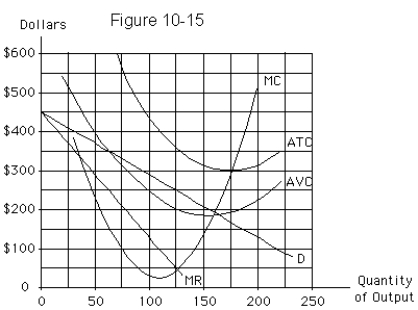A) coincides with the marginal cost curve
B) lies below the market demand curve
C) coincides with the market demand curve
D) is a horizontal line through the midpoint of the market demand curve
E) does not exist
G) B) and E)
Correct Answer

verified
Correct Answer
verified
Multiple Choice
Which of the following could be a barrier to entry?
A) diseconomies of scale
B) a large number of buyers and sellers
C) a standardized product
D) economies of scale
E) diseconomies of scope
G) None of the above
Correct Answer

verified
Correct Answer
verified
True/False
When electric utility companies lobby state legislatures for continued protection from competition,this is an example of rent-seeking behavior.
B) False
Correct Answer

verified
Correct Answer
verified
Multiple Choice
When an increase in a network's membership increases the product's value to users,there are
A) network externalities.
B) economies of scale.
C) natural monopolies.
D) diminishing costs.
F) A) and D)
Correct Answer

verified
Correct Answer
verified
Multiple Choice
A natural monopoly exists when
A) economies of scale are negligible
B) there are a few dominant firms that corner the market
C) one firm can produce the market output at lower average cost than two or more firms can
D) barriers to entry are low
E) only a few firms can minimize cost and maximize profit
G) C) and D)
Correct Answer

verified
Correct Answer
verified
Multiple Choice
 -How much profit will the profit-maximizing level of output for the non-discriminating monopolist in Figure 10-3 yield?
-How much profit will the profit-maximizing level of output for the non-discriminating monopolist in Figure 10-3 yield?
A) $10
B) $20
C) $30
D) $40
E) $50
G) B) and E)
Correct Answer

verified
Correct Answer
verified
Multiple Choice
 -The profit-maximizing monopoly in Figure 10-6 does not price discriminate.It will produce
-The profit-maximizing monopoly in Figure 10-6 does not price discriminate.It will produce
A) 0 units
B) 225 units
C) 350 units
D) 500 units
E) none of these
G) D) and E)
Correct Answer

verified
Correct Answer
verified
Multiple Choice
Patents grant
A) permanent monopoly status to creators of scientific inventions
B) permanent monopoly status to creators of any intellectual property
C) temporary monopoly status to creators of scientific inventions
D) temporary monopoly status to creators of any intellectual property
E) permanent monopoly status to natural monopolies
G) A) and C)
Correct Answer

verified
Correct Answer
verified
Multiple Choice
 -The firm in Figure 10-15 has
-The firm in Figure 10-15 has
A) an economic loss of $25,000
B) an economic loss of $12,500
C) an economic profit of $6,250
D) neither an economic profit nor an economic loss
E) an economic loss of $16,000
G) B) and E)
Correct Answer

verified
Correct Answer
verified
Multiple Choice
Which of the following conditions would prevent price discrimination?
A) an economic profit
B) a monopoly market structure
C) profit maximization
D) the inability to identify those customers willing to pay more
E) the ability to prevent low-price customers from reselling to high-price customers
G) A) and C)
Correct Answer

verified
Correct Answer
verified
Showing 201 - 210 of 210
Related Exams